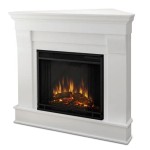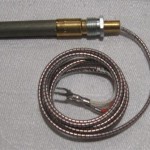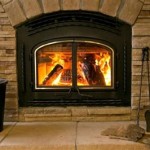Vintage Cast Iron Fireplace Wood Holder Replacement: A Comprehensive Guide
The allure of a vintage cast iron fireplace extends beyond its functional purpose as a heat source. It often serves as a focal point, imbued with historical charm and craftsmanship. A crucial component of this aesthetic is the wood holder, typically constructed from cast iron to withstand the heat and weight of logs. Over time, however, these holders can become damaged, rusted, or even lost, necessitating a replacement. Finding a suitable replacement for a vintage cast iron fireplace wood holder requires careful consideration, balancing authenticity with functionality.
This article aims to provide a comprehensive guide to navigating the process of replacing a vintage cast iron fireplace wood holder. It will explore the factors to consider when selecting a replacement, the types of replacements available, and the steps involved in ensuring a proper fit. Furthermore, it will delve into the restoration options for original holders, offering an alternative to complete replacement in certain circumstances.
Assessing the Need for Replacement and Identifying the Original Holder
Before embarking on the search for a replacement wood holder, a thorough assessment of the existing situation is paramount. This involves determining the extent of the damage to the original holder, if any remains, and identifying the specific style and dimensions. Common issues that necessitate replacement include structural damage, such as cracks or breaks in the cast iron, significant rust corrosion that compromises the integrity of the holder, and irreparable loss due to theft or accident.
If any portion of the original holder remains, careful examination is crucial. Look for any identifying marks, such as manufacturer stamps, model numbers, or distinctive design elements. These markings can provide valuable clues in tracking down a matching or near-matching replacement. Photographs of the original holder, taken from various angles, will also prove invaluable when comparing potential replacements. Consider the configuration of the holder; is it a single piece, or comprised of multiple components? Understanding the original construction is essential for finding a structurally sound and aesthetically complementary replacement.
If the original holder is completely missing, determining the era and style of the fireplace is the next step. This can often be achieved by researching the fireplace manufacturer, if known, or by consulting with antique fireplace specialists. Understanding the period in which the fireplace was manufactured will significantly narrow down the range of potential wood holder styles that would have been originally paired with it. Catalogs from the relevant era, if available, can provide visual references for authentic wood holder designs.
Furthermore, measuring the fireplace opening is critical. The wood holder must fit comfortably within the firebox without obstructing the airflow or hindering the safe operation of the fireplace. Measure the width, depth, and height of the available space, taking into account any existing features such as ash dumps or fire grates. These measurements will serve as critical parameters when searching for a suitable replacement.
Exploring Replacement Options: Sourcing and Selecting
Once the dimensions and desired style of the replacement wood holder have been determined, the search for a suitable replacement can begin. Several avenues exist for sourcing potential replacements, each with its own advantages and disadvantages.
Antique stores and salvage yards are often excellent sources for authentic vintage cast iron fireplace accessories. These establishments may have a selection of wood holders salvaged from deconstructed fireplaces or inherited from estate sales. A careful inspection of the available inventory is essential to identify pieces that closely match the original style and dimensions. Be prepared to spend time meticulously searching and comparing options, as finding an exact match can be challenging. Furthermore, the condition of the wood holders in these locations can vary significantly, so be sure to thoroughly assess any potential purchase for structural integrity and rust damage.
Online marketplaces, such as eBay, Etsy, and specialized antique dealers' websites, provide another avenue for sourcing vintage cast iron fireplace wood holders. These platforms offer a wider geographical reach, potentially uncovering options that may not be available locally. When purchasing online, it is crucial to carefully review the seller's description and photographs, paying close attention to the dimensions, condition, and any identifying marks. Asking the seller questions about the item's history and provenance can also be helpful in verifying its authenticity and suitability. Always check the seller's feedback rating and return policy before making a purchase.
Reproduction cast iron fireplace wood holders are also available from various manufacturers and retailers. These reproductions often replicate the designs of popular vintage styles, offering a more readily available and often more affordable alternative to sourcing an original. While reproductions may not possess the same historical authenticity as original pieces, they can still provide a visually appealing and functional replacement. When considering a reproduction, pay attention to the quality of the casting and the finish, ensuring that it is durable and resistant to heat and rust. Compare the design of the reproduction to photographs of original wood holders to assess its accuracy and adherence to vintage aesthetics.
Regardless of the source, meticulous attention to detail is essential when selecting a replacement wood holder. Ensure that the dimensions are compatible with the fireplace opening, and that the style complements the overall aesthetic of the fireplace. Examine the piece for any signs of damage or weakness, and consider the weight capacity of the holder to ensure it can safely support the weight of the logs.
Installation and Restoration Considerations
Once a suitable replacement wood holder has been acquired, the next step is to install it in the fireplace. The installation process typically involves simply placing the holder within the firebox, ensuring that it is stable and securely positioned. However, in some cases, minor modifications may be necessary to achieve a perfect fit. This could involve shimming the holder with small pieces of metal or wood to level it or adjusting the position of other fireplace components.
Before installing the replacement, it is advisable to clean and prepare it for use. This may involve removing any rust or debris with a wire brush or sandpaper, and applying a heat-resistant paint or sealant to protect the cast iron from corrosion and enhance its appearance. Follow the manufacturer's instructions for applying the paint or sealant, ensuring that it is properly cured before exposing it to heat.
As an alternative to replacing the original wood holder entirely, restoration may be a viable option in certain circumstances. If the holder is damaged but not beyond repair, a skilled metalworker or blacksmith may be able to restore it to its original condition. This could involve welding cracks, repairing broken pieces, and removing rust. Restoration can preserve the historical authenticity of the fireplace and may be a more cost-effective option than sourcing a replacement, particularly for rare or unique designs.
The restoration process typically involves a thorough cleaning of the cast iron, followed by the repair of any structural damage. Rust removal can be achieved through various methods, including sandblasting, chemical stripping, or manual scraping. Once the repairs are completed, the cast iron is often treated with a protective coating to prevent future corrosion. This coating may be a heat-resistant paint, a sealant, or a traditional blacksmith's finish. The choice of coating will depend on the desired aesthetic and the intended use of the wood holder.
If considering restoration, it is essential to consult with a qualified professional who has experience working with cast iron fireplace accessories. They can assess the condition of the holder and advise on the most appropriate restoration techniques. The cost of restoration will vary depending on the extent of the damage and the complexity of the repair work, but it is often a worthwhile investment for preserving a valuable piece of history.
In conclusion, replacing a vintage cast iron fireplace wood holder requires a careful and methodical approach. By thoroughly assessing the need for replacement, exploring the available options, and considering restoration possibilities, it is possible to find a suitable replacement that preserves the historical charm and functional integrity of the fireplace.

Antique Vintage Cast Iron Fireplace Basket Grate Coal Box Wood Log Holder Insert

Antique Vintage Cast Iron Fireplace Grate Wood Rack Log Holder Removable

Antique Cast Iron Fireplace Log Firewood Grate Holder Basket Ornate

Antique Cast Iron Fireplace Log Firewood Grate Holder Basket Ornate

Antique Vintage Cast Iron Fireplace Basket Grate Coal Box Wood Log Holder Insert

Antique Cast Iron Fireplace Grate Log Holder Fleur De Lis 20

Antique Cast Iron Fireplace Tool Holder Stand

Newspaper Log Roller Fireplace Hearth Accessory Wainfleet Trading Post

Late 19th Century Victorian Jenny Lind Cast Iron Andirons With Log Holder Chairish

Late 19th Century Victorian Jenny Lind Cast Iron Andirons With Log Holder Chairish
Related Posts








